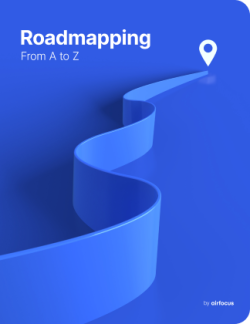Program Roadmap
Program Roadmap Definition
A program roadmap is a high-level overview of a product management program. It is a tool for communication designed by a product team and a program manager to define and illustrate the program lifecycle, encompassing all of its stages and objectives. Over a year or more, program roadmaps stress the connections between service gaps, business strategy, program milestones, and impending initiatives.
What should be included in a program roadmap?
Most of the time, a program roadmap is just a higher-level roadmap that oversees a handful of projects or smaller-sized project roadmaps. So, a program roadmap should mainly include all the relevant details and information about those projects.
Although these details may vary from team to team, they usually include the following components:
Milestones - These should indicate the approximate due dates for goals
A visual format - Program roadmaps generally use timelines to represent plans and goals for several different projects
Deliverables - These are short-term tasks that need to be completed to reach different milestones
Strategic thinking is more important than tactical responses in program management, which can be a challenging shift for product managers. Program managers add long-term value to the company's vision and direction. They assist those more focused on short-term commitments, deadlines, and sprints while being conscious of the company's overall strategy and goals.
Why you shouldn’t use Excel or PowerPoint templates to create your program roadmap
It might be tempting to create a program roadmap using templates for popular software like Excel or PowerPoint. However, these programs have some serious limitations when creating roadmaps.
If you use Excel and PowerPoint roadmap templates, you’ll likely run into these issues:
Hard to keep all your data updated automatically
Difficult to collaborate with everyone else on the team
You have to add everything manually, wasting a lot of time
It’s hard to manage and back-up files
Everything takes longer
That’s why we always recommend creating roadmaps with a purpose-built tool (like airfocus!) With a roadmapping tool, you can:
Add things easily with a drag-and-drop interface
Use different views
Collaborate with multiple people easily
Stay updated automatically
Keep team members focused on the same goals
Easily share with other business partners and stakeholders
Easily track team progress
General FAQ

Glossary categories
Build great roadmaps

Experience the new way of doing product management








